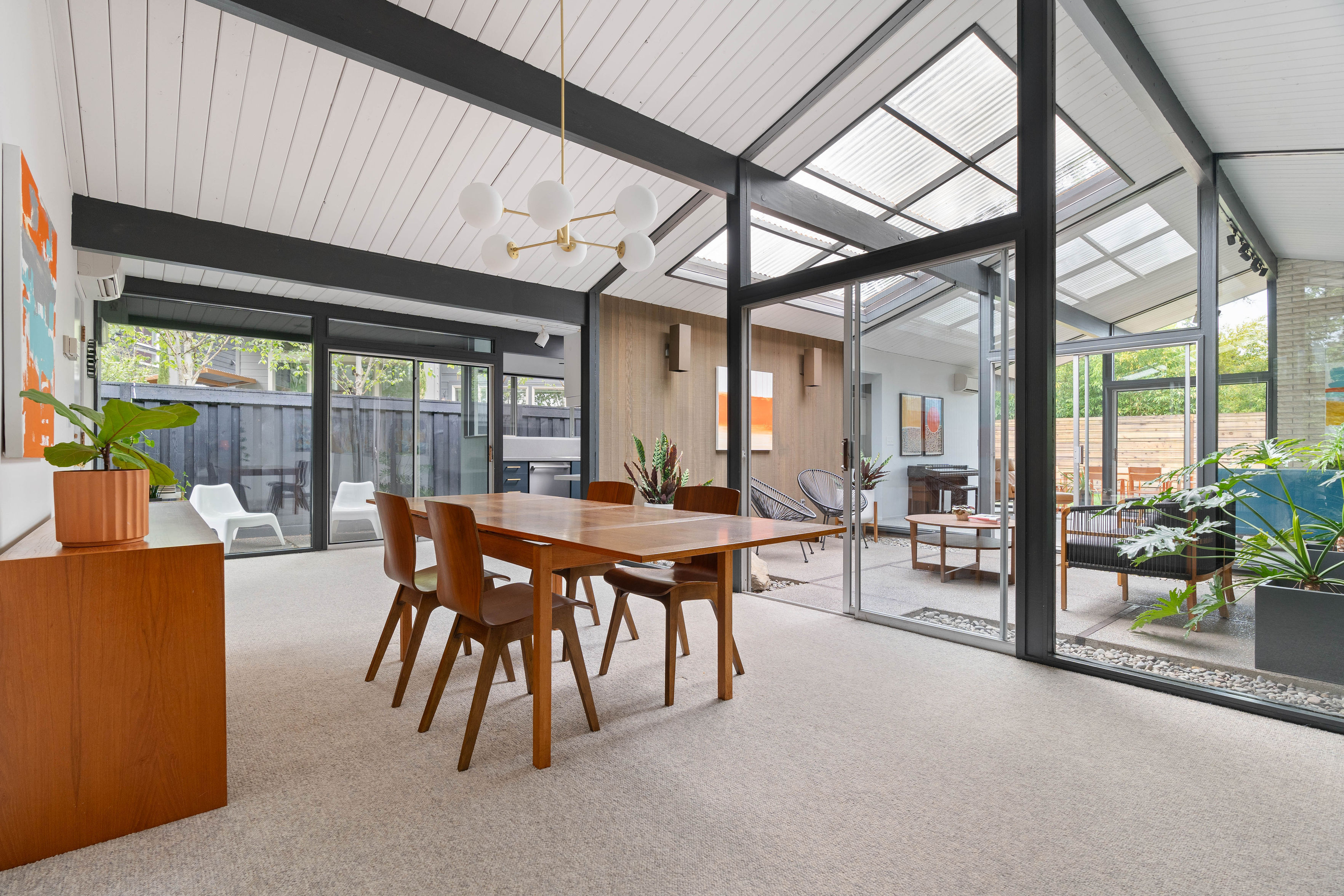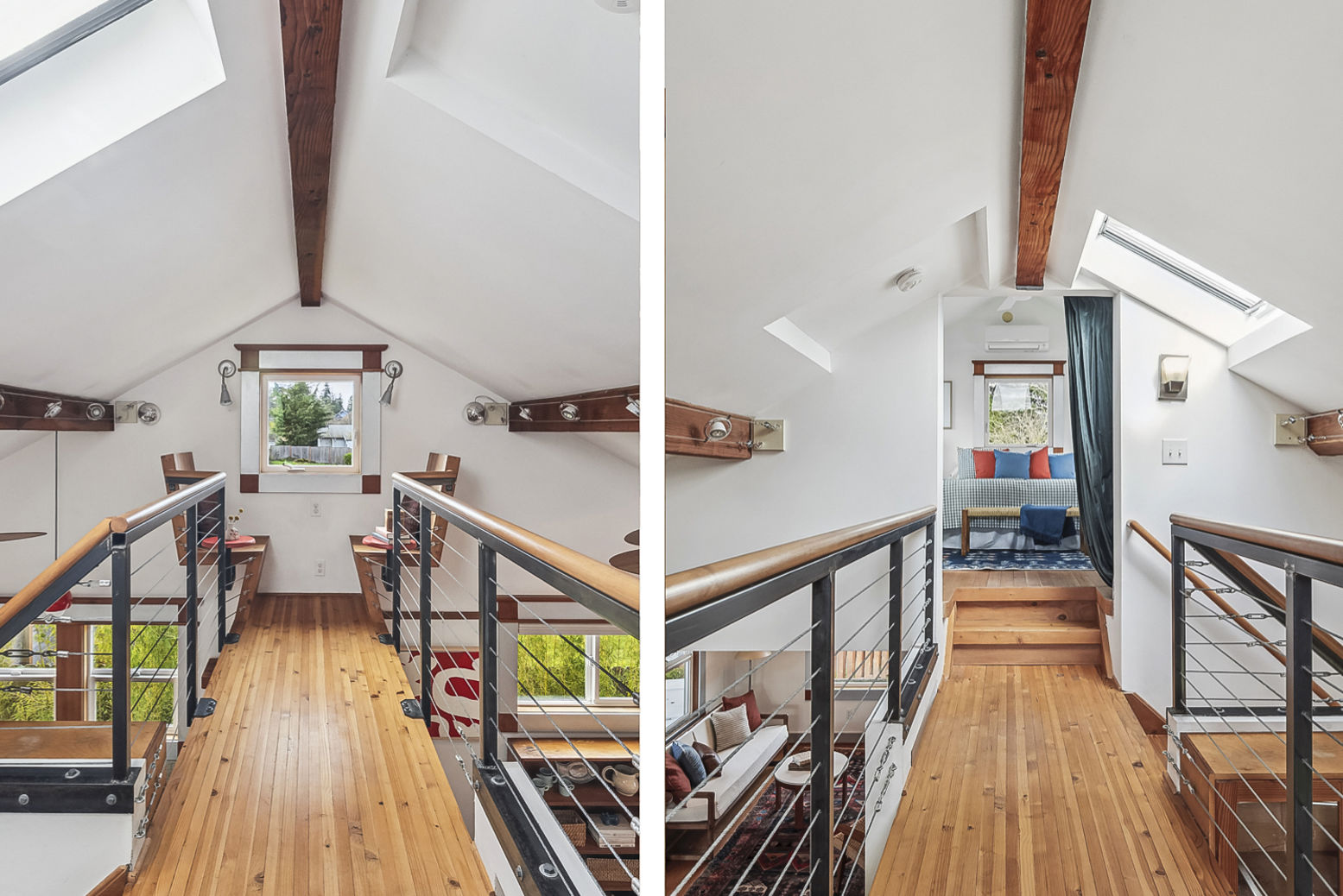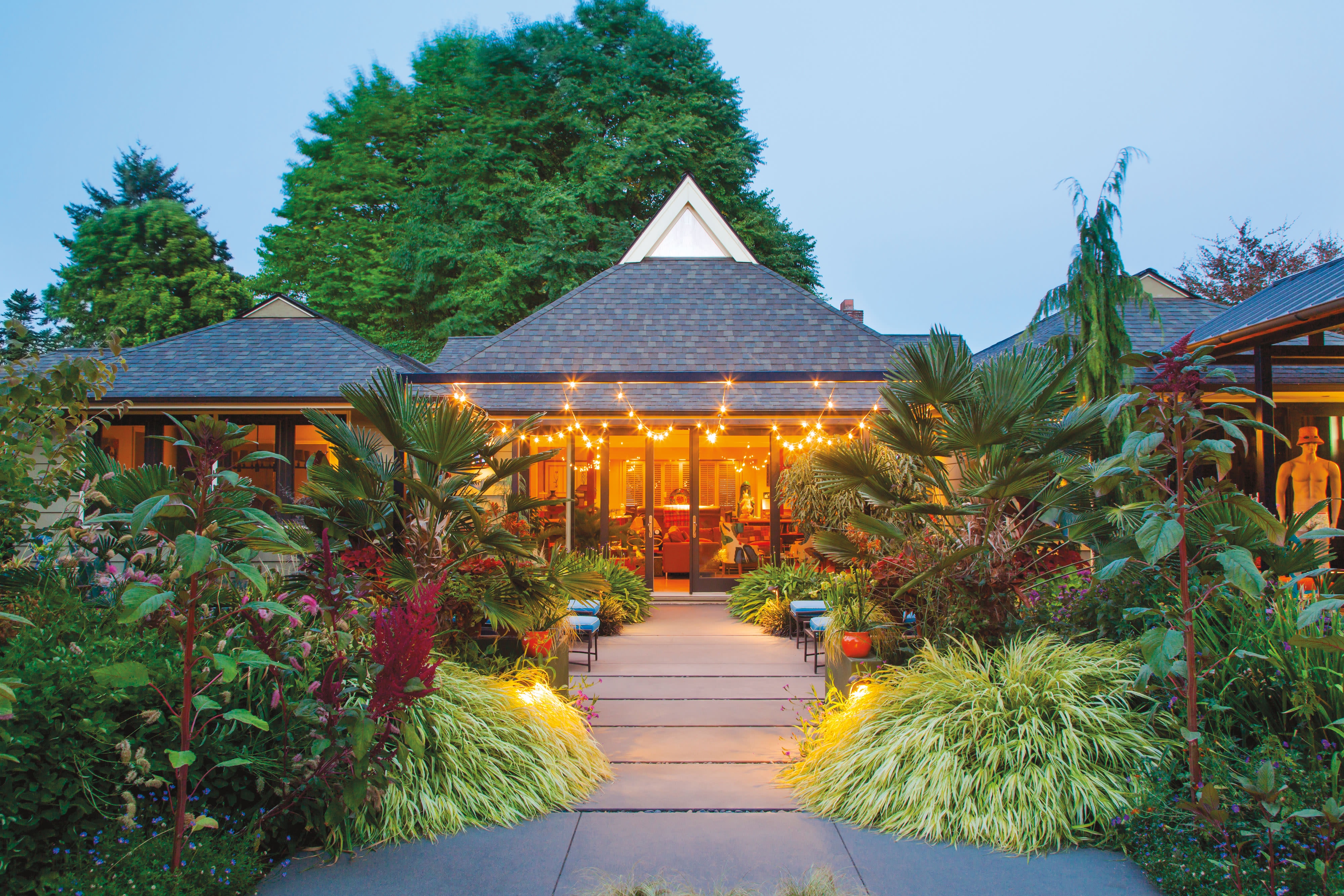
This Dramatic, Colorful, and Playful Portland Garden Has it All
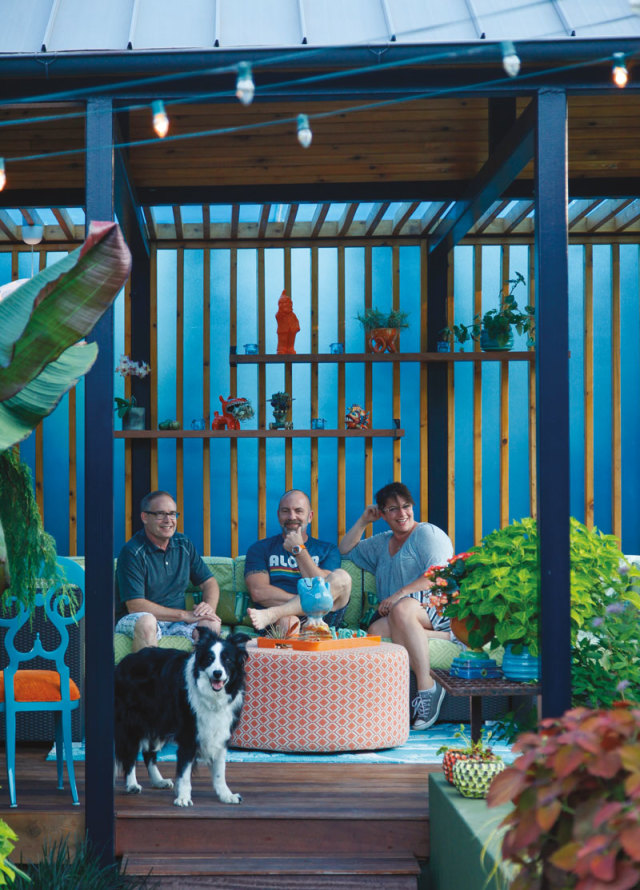
Neill, Quirk, and Crockett in the bedroom pavilion.
Image: Joshua McCullough
Craig Quirk and Larry Neill wanted a fresh start in the garden. Again.
The couple, a veterinarian and a purchasing officer, had already taken the staid West Slope plot they bought in 1995—stately sequoia, arborvitae hedge, tidy lawn—and primmed it up with English-style plantings, complete with hybrid tea garden. “We bought one of those perennial flower border diagrams showing what to plant where,” Quirk, 52, recalls. “But at some point, Larry got tired of spraying. We needed a new direction.” So they shifted to heirloom roses interplanted with drifts of perennials and a dry Mediterranean garden.
It was pretty good. There was a rectilinear water feature, a dramatic Moroccan-blue wall. But great gardens take time. They evolve. Indeed, things sped up six years ago, when Quirk’s longtime plant-collecting hobby became an obsession, and an extensive interior remodel of their California Rambler pointed to their garden as the next logical project. So they brought in Laura Crockett of the local firm Garden Diva Designs, and they created what they now call “Floramagoria.”
“Laura got that we needed something bigger and bolder than we were originally thinking,” says Quirk.
“There was already a beautiful garden there,” says Crockett. “My challenge was to weave the existing and future spaces together in a unified way.”
The result is a varied landscape attuned to the couple’s sensibilities, from a prolific edible side garden to dramatic lines of perennials to an exuberant, Asian-influenced pavilion—with an eclectic collection of art woven throughout.
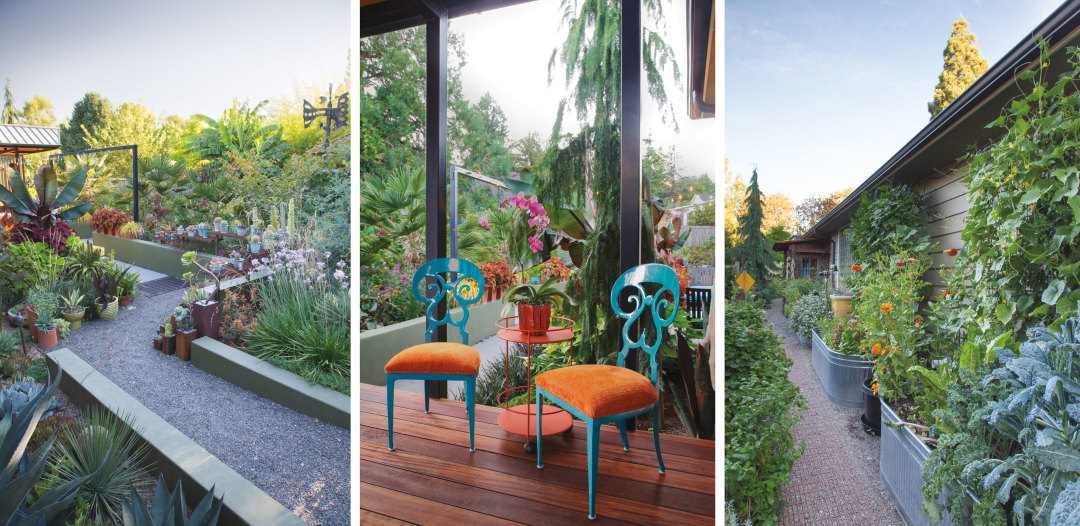
A low green wall maintains order amid ebullient plantings; chairs from Digs Inside & Out; “Larry’s Farm” brims with veggies.
Image: Joshua McCullough
The couple knew that they needed natural zones for entertaining and gathering with friends. Thus was born a series of inviting outdoor living spaces: a covered, furnished pavilion off the bedroom, an open sun terrace off the living room, a seating area around a fire pit, and a roomy, secluded dining pavilion nestled in the back—all arranged in a sequence of bold visual axes. “We took full advantage of view corridors in this garden, ” Crockett says.
The simple original idea of a small dining table with an umbrella was replaced with a spacious pavilion with room for a dozen chairs. Southeast Asian architectural details—a bamboo frame, teak furnishings—resonate with plantings like oversize, tropicalesque foliage plants and classically tropical air plants, variegated ginger, and mounted staghorn ferns that overwinter indoors. Colorful glass beetles, ceramic moths, and a joyous array of tchotchkes remove any hint of the stuffiness that can result from such elegant materials and geometries. Best of all, the space is used. “In the evening, you walk out into the darkness and look back at the house from the dining pavilion,” says Crockett. “There’s a visceral feeling that comes from looking back towards the light.” Indeed, she uses the combination of warm light and spacious pathways to draw visitors to all corners of the garden. “Fire draws people towards it,” says Crockett. “So we put it at the back of the garden.”
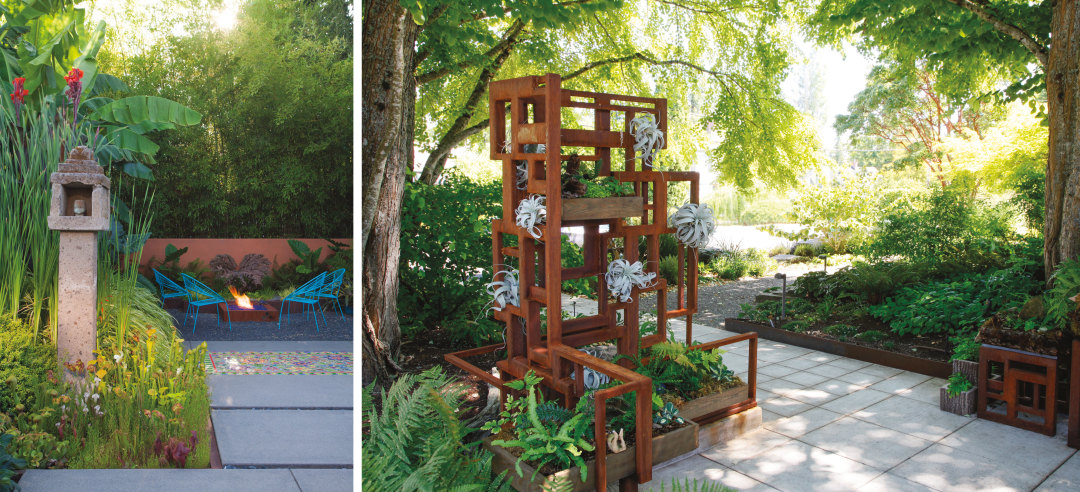
Antique Balinese shrines flank a fireside seating area; a sculpture with fern tables designed by Crockett.
Image: Joshua McCullough
To add structure to the visual axes, Crockett ordered the garden with a series of evocatively colored concrete walls. A low, lizard-green wall separates the foreground from the middle, and offers an ideal spot for Quirk’s treasured collectibles plus a dazzling array of potted plants. A midsize orange wall focuses attention on the steel fire pit at the back of the garden. And a tall blue wall at the back of the dry garden creates a dramatic backdrop to rusty-red canna and golden creeping Jenny—simultaneously dividing the hot, Mediterranean flora from the shady, “rain forest” plantings under the tree canopy. The backside of the blue wall is painted with a shock of chartreuse, lighting up the supernaturally oversize foliage of exotic fern, hosta, mayapple and hardy impatiens planted at the base of the massive giant sequoia.
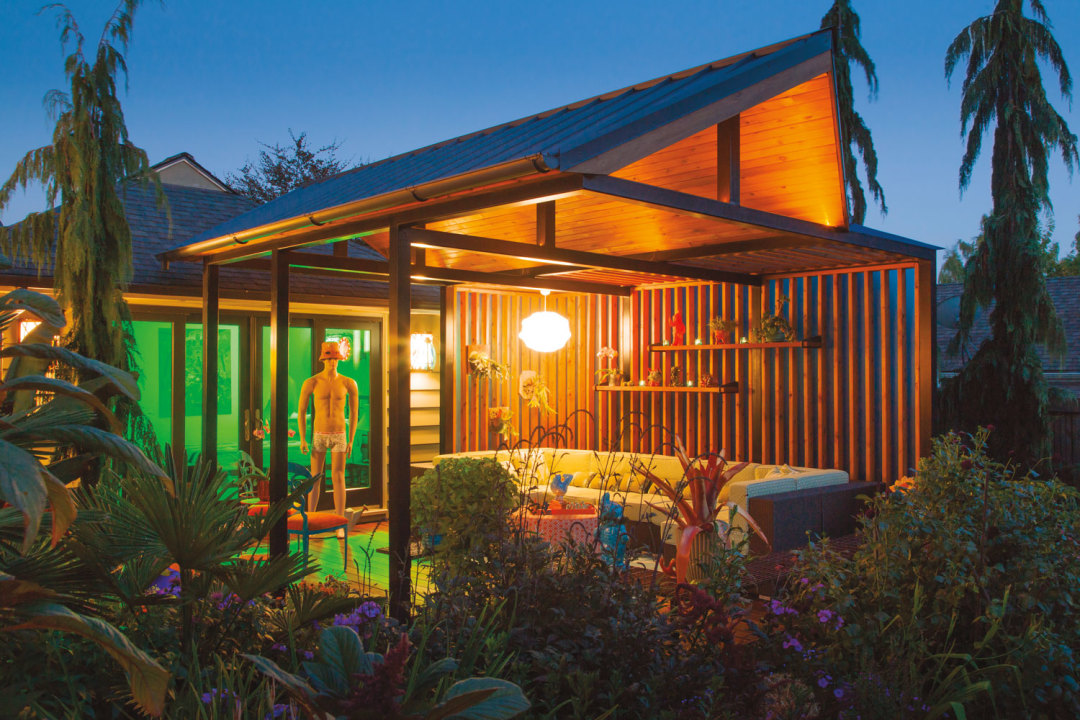
The bedroom pavilion transformed by nightfall.
Image: Joshua McCullough
Though Crockett played a vital role in developing the garden’s most recent structural changes, she’s convinced that the most beautiful gardens are the result of collaboration over the years: “Longtime gardeners understand the importance of time and communication in this process.”
And indeed, the garden continues to evolve. Recently, when Neill found he missed tending to his own area of the garden, it didn’t take him long to transform an unused sunny passage into a productive plot of edibles. Comprising five huge galvanized stock tanks brimming with greens, tomatoes, cucumbers, squash, and raspberry and blueberry bushes, the area is now known as “Larry’s Farm,” complete with a formidable collection of ceramic, glass, and wooden insects. Likewise with Quirk’s collections: “When we travel and see art, we let Laura know about it so she can find a place. There’s a lot of collaboration,” says Quirk.
After 20 years of experimentation, Floramagoria now beautifully expresses the evolving aesthetics and needs of its caretakers. The garden has finally reached that fabled sweet spot—that is, until it changes once again.
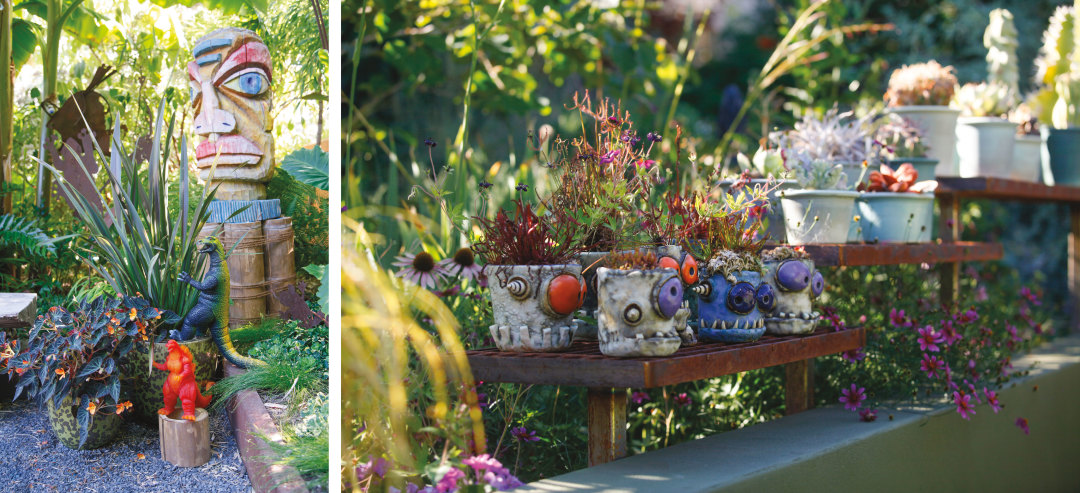
A tiki from Grand Marketplace guarded by Godzillas; monster-themed planters by James DeRosso hold carnivorous plants.
Image: Joshua McCullough
